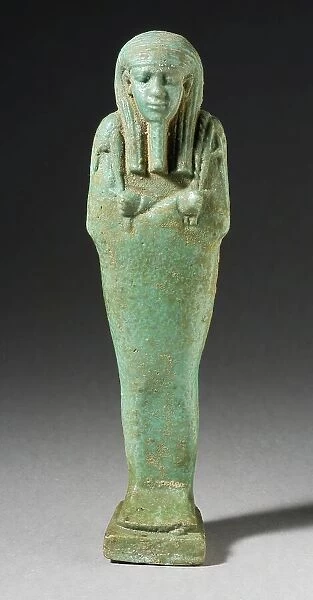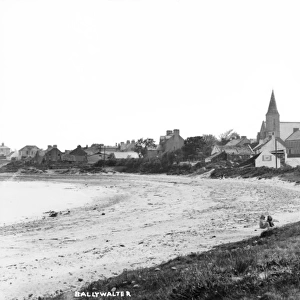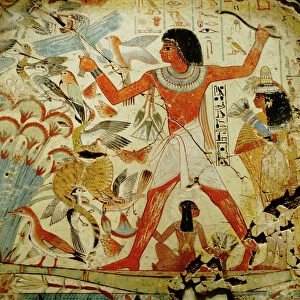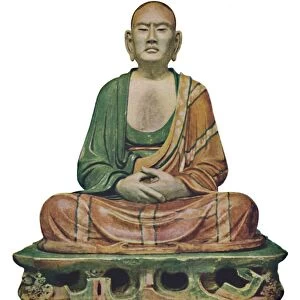Home > Arts > Contemporary art > Sculpture > Ceramic sculptures
Shabti, Inscribed, 26th Dynasty Late Period, circa 600 BCE. Creator: Unknown
![]()

Wall Art and Photo Gifts from Heritage Images
Shabti, Inscribed, 26th Dynasty Late Period, circa 600 BCE. Creator: Unknown
Shabti, Inscribed, 26th Dynasty Late Period, circa 600 BCE
Heritage Images features heritage image collections
Media ID 36344495
© Heritage Art/Heritage Images
26th Dynasty 7th Century Bc Arms Arms Crossed Crossed Arms Faience Glazed Inscribed Inscription Looking Down Mausoleum Shabti Shawabti Solemn Tin Glazed Tomb Figure Ushabti Figure Ancient Egyptian Mizraim Posture
FEATURES IN THESE COLLECTIONS
> Africa
> Egypt
> Related Images
> Arts
> Contemporary art
> Sculpture
> Ceramic sculptures
> Europe
> United Kingdom
> Northern Ireland
> County Down
> Related Images
> Historic
> Egyptian pyramids and tombs
EDITORS COMMENTS
This Shabti figure, hailing from the 26th Dynasty Late Period of Ancient Egypt, circa 600 BCE, showcases the intricacies of Egyptian art and the richness of its cultural heritage. The Shabti, also known as Ushabti or Shawabti, was a funerary figurine believed to serve as a substitute for the deceased in the afterlife, performing tasks and offering prayers to ensure their well-being. The Shabti is depicted in a full-length, solemn posture, with crossed arms and a serious expression, gazing downwards. His body is made of green faience, a type of ceramic material that was popular during the Late Period for its durability and vibrant color. The figure's arms are adorned with intricate inscriptions, which include the name of the deceased and the spell that would ensure the Shabti's effectiveness in the afterlife. The Shabti's posture and arms, crossed over his chest, may suggest that he was intended to be a warrior, ready to defend the deceased in the afterlife. The figure's arms are also adorned with weapons, such as a bow and arrows, and a shield, further emphasizing this interpretation. This Shabti figure is now part of the collection at the Los Angeles County Museum of Art (LACMA), providing a valuable insight into the artistic and cultural practices of Ancient Egypt. The close-up view of the figure's face and inscriptions offers a unique perspective, inviting us to appreciate the intricacies of this ancient art form and the rich history it represents.
MADE IN THE USA
Safe Shipping with 30 Day Money Back Guarantee
FREE PERSONALISATION*
We are proud to offer a range of customisation features including Personalised Captions, Color Filters and Picture Zoom Tools
SECURE PAYMENTS
We happily accept a wide range of payment options so you can pay for the things you need in the way that is most convenient for you
* Options may vary by product and licensing agreement. Zoomed Pictures can be adjusted in the Cart.





